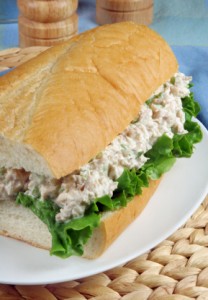Featured
This week’s featured posts.
This week’s featured posts.

Is that Trazodone I taste?
Interesting things I’ve seen this week (even if they weren’t published this week)
What can pickpockets teach us about how our minds work? It’s simple: you’re not nearly as focused as you think. It’s easy to divert your attention and rob you blind. Click here for The New Yorker article.
What’s a phablet? You can find out by going to the Consumer Electronics Show or by clicking here. (Hint: it’s what happens when you cross a phone with a tablet).
And how about the Netherlands glow-in-the-dark highways? It’s another example of mashup thinking. Just mashup asphalt and phosphorescent powder. It absorbs solar energy during the day and glows at night. Now why didn’t we think of that? Really… why didn’t we? Click here.
What is City 2.0? We’re spending about $100 billion worldwide each year trying to find out. Maybe it’s not just smart gadgets. Click here.
Why wouldn’t you try to poison your husband by putting Trazodone pills in his tuna salad? Because the bitter taste would tip him off right away. One needs to be practical in these endeavors. Click here.
Should you stand or sit at work? Why isn’t lying down an option? Click here.
Would you rather be right or would you rather be president? Phillip Stephens writes that left-wingers used to be the ones who were too pure to make the compromises needed to govern. Now it’s the right wing — on both sides of the Atlantic. Click here.

Drop by any time.
Here’s a little exercise in critical thinking. More people in the United States die on Christmas Day than on any other day of the year. It’s our deadliest day. New Year’s Day is the second deadliest day.
The first question a critical thinker would ask is: Is that really true? Here’s the evidence: an article published in Social Science and Medicine in October 2010, that analyzed 54 million death certificates from 1979 through 2004. (Click here for the abstract and charts; the full-text is behind a pay wall). Regardless of the setting or the cause, the number of deaths clearly peaks on Christmas Day. This affects all demographic groups, except children.
The next question a critical thinker might ask is: Why would that be? Here the logic gets a little fuzzy. As the authors of the research paper point out, they tested nine different hypotheses but believe more research is necessary. So let’s think about it a bit.
The hypothesis I like — which I spotted in the Daily Beast (click here) — is that Christmas isn’t abnormal in terms of life-threatening incidents, but is abnormal in the way people behave when a life-threatening incident occurs. If you feel chest pains on any random day, you may just head straight for the hospital. That’s a good idea because the sooner you get there, the better your chances of survival. On Christmas, however, people may delay, not wanting to spoil the festive atmosphere or leave the family celebration. They may also believe that they’ll get poor service at the hospital on Christmas. The hospital will likely be understaffed or staffed by second stringers, etc. Better to wait ’til tomorrow to get better service.
The next question a critical thinker might ask is: If this is true, what should we do about it, if anything? This hypothesis, of course, is not fully tested. We can’t claim conclusively that it’s true. But there is a certain logic about it. Perhaps enough that we can make Pascal’s wager — the evidence isn’t conclusive but it’s strong enough to make a bet. If we’re wrong we don’t lose much. If we’re right, we can save a lot of lives. So, what do we do? Perhaps we can advertise the phenomena and encourage people to get to the hospital quickly, even if it is Christmas. In fact, consider this article a public service announcement. If you have chest pains today, get your butt to the hospital pronto!
Merry Christmas!

Feel like mugging someone?
Did you know that the sale of ice cream is strongly correlated to the number of muggings in a given locale? Could it be that consuming ice cream leads us to attack our fellow citizens? Or perhaps miscreants in our midst mug strangers to get the money to buy ice cream? We have two variables, X and Y. Which one causes which? In this case, there’s a third variable, Z, that causes both X and Y. It’s the temperature. As the temperature rises, we buy more ice cream. At the same time, more people are wandering about out of doors, even after dark, making them convenient targets for muggers.
What causes what? It’s the most basic question in science. It’s also an important question for business planning. Lowering our prices will cause sales to rise, right? Maybe. Similarly, government policies are typically based on notions of cause and effect. Lowering taxes will cause the economy to boom, right? Well… it’s complicated. Let’s look at some examples where cause and effect are murky at best.
Home owners commit far fewer crimes proportionally than people who don’t own homes. Apparently, owning a home makes you a better citizen. Doesn’t it follow that the government should promote home ownership? Doing so should result in a safer, saner society, no? Well… maybe not. Again, we have two variables, X and Y. Which one causes which? Could it be that people who don’t commit crimes are in a better position to buy homes? That not committing crimes is the cause and home ownership is the result? The data are completely tangled up so it’s hard to prove conclusively one way or the other. But it seems at least possible that good citizenship leads to home ownership rather than vice versa. Or maybe, like ice cream and muggings, there’s a hidden variable, Z, that causes both.
The crime rate in the United States began to fall dramatically in the early 1990s. I’ve heard four different reasons for this. Which one do you think is the real cause?
Which of the four variables actually caused the declining crime rate in America? A lot is riding on the answer. Unfortunately, the data are so tangled up that it’s difficult to tell what causes what. But here are some rules for thinking about correlation and causation:
Actually, the only way to prove cause and effect beyond a shadow of a doubt, is the experimental method. Which leads us to our question for tomorrow: does smoking cause cancer in humans?

I’m looking for a connection.
Let’s say that the city of Groverton has 100,000 residents and produces X number of innovations per year. Down the road, the city of Pecaville has 1,000,000 residents. Since Pecaville has ten times more residents than Groverton, it should produce 10X innovations per year, correct?
Actually, no. Other things being equal, Pecaville should produce far more than 10X innovations. In predicting innovation capacity, it’s not the number of people (or nodes) that counts, it’s the number of connections. The million residents of Pecaville have more than ten times the connection opportunities of the residents of sleepy little Groverton. Therefore, they should produce much more than ten times the number of innovations.
In Where Good Ideas Come From, Steven Johnson makes the point that connections are the fundamental unit of innovation. The more connections you can make, the more likely you are to create good ideas. Scale doesn’t matter — more connections are better at a very small scale or a very large scale. This is where cities come in. In terms of innovation, larger cities have multiple advantage over smaller cities, including:
Does this work in real life? Johnson provides some very interesting anecdotes. More recently, last Friday’s New York Times had an article (click here) on manufacturing and innovation. The article argues that more innovation happens when designers are close to the manufacturing floor. Why? Because of information spillover. Researchers claim that offshore manufacturing reduces our ability to innovate precisely because it reduces information spillover. Connectivity seems to work on the manufacturing floor as much as it does in big cities. Scale doesn’t matter. Bottom line: if you want to be more innovative, get connected.

Pardon me while I unitask.
Interesting items I’ve discovered in the past week or so: